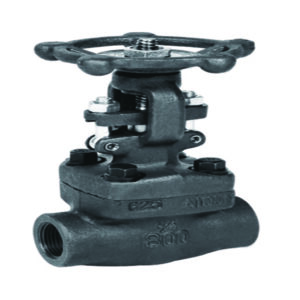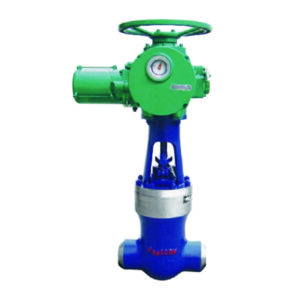Petrochemical Industries
The applications of the control valve in the petrochemical industry
It is known that control valves are the most used in the petrochemical industry as they represent important elements for the automation of processes.
The quality of the
control valve is directly related to the commissioning of the DCS control system and the operation of the process equipment. Their main applications in this sector are listed below.
Petrochemical industry
After 60 years of development since the founding of the People’s Republic of China, China’s oil refining industry has now formed a relatively complete industrial system.
Refining companies have increased their efforts to improve product quality by adjusting the layout, structure of refining units and products, while also seeking to save energy and reduce environmental emissions.
The following is a brief introduction to the typical application of control valves in the current 1 million ton oil refining unit.
Atmospheric and vacuum distillation unit
In this part, the purpose of the control valve is to control crude oil, desalinated water, high pressure fuel gas, fuel oil, steam, deoxygenated water and purified water. The maximum operating temperature in the steam pipeline reaches 400 ° C, and the temperature of the first and second lines, minus the second and third lines, and some fuel oil and flash bottom oil reached about 250 ° C .
Main requirements of the control valve
o direct
o three-way
o equipped with double acting cylinder piston actuator with handwheel mechanism (imported from the original)
o equipped with an air accumulation tank.
2. Requirements in the process
The three-way control valve satisfies the flow capacity and the deviation of the regulation accuracy is controlled within ± 5%. Steam lines up to 400 ° C, fuel oil and flash bottom oil at 250 ° C require the control valve to operate at medium and high temperatures for a long time without failure.
3. Matters that need attention
When the nominal diameter is large, the required actuator output thrust is high and the response speed is high. The quick response increases the initial valve load and places high demands on the overall valve structure design.
The nominal diameter is large and the valve trim requires high strength and
corrosion resistance, so the parts must be treated with a special surface hardening. Due to the high sulfur content of the process fluid, the
valve body and valve parts must be treated with a special anti-sulfur treatment. Pipes in contact with steam up to 400 ° C, fuel oil and flammable base oil at 250 ° C, require high surface hardness of the valve trims.
Main technical parameters of control valve
Large-diameter straight-through, three-way control valve: DN300, 350; pressure class Class 300.
Large diameter straight-through, three-way control valve: DN400, 450, 500; pressure class Class 300.
High temperature and high pressure straight-through control valve: DN25 ~DN450; pressure class Class 300, Class 600.
Advancement of control valve structure design
The balanced structure design of large-diameter and ultra-large-diameter straight-through and three-way control valves requires technical research.
Special surface hardening treatment methods and effective process methods under normal high temperature require technical research.
The reliable sealing technology of metal and non-metal sealing pairs such as packing under high temperature and high pressure needs to be tackled.
Catalytic Cracking Unit
The objects controlled by this part of the control valve are mostly steam, condensed water or crude products such as gasoline and diesel. It is less corrosive, but the primary steam temperature is as high as 450℃.
The maximum working pressure of the deaerated water pipeline can reach 5.6-6MPa, although the pressure difference is small, it needs to use a low-noise control valve due to the large noise in the small opening condition.
Main requirements of control valve
Requirements in the process: the control valve is required to operate without failure under high temperature for a long time, and the design is low noise.
Matters needing attention: the problem of crawling and jamming during the operation of the control valve under high temperature steam.
Material selection and surface treatment: special surface hardening treatment of parts under high temperature conditions so that the surface hardening layer does not supplant and does not deteriorate during its long-term, medium and high temperature operation.
Main technical parameters of control valve
Noise reduction control valve for high temperature steam and superheated steam: DN40~300; pressure class ≥Class 300.
Advancement of control valve structure design
Need to be addressed:
1. Reliable sealing technology of metal and non-metal sealing pairs under long-term high temperature operation.
2. The noise reduction design, processing technology and detection methods of high temperature steam.
Hydrogenation unit
Key control valve for hydrogenation unit: caliber DN25~300; pressure class Class150, 300, 400, 600, 900, 1500, 2500.
Low leakage rate casing valve: caliber DN100~300; pressure class Class150, 300, 400, 600; annual production capacity (up to production) 1000 units.
Catalytic Reformer
Since most of the fluids in this part contain hydrogen or hydrogen molecules, the valve trim is basically made of 316L material. Some high temperature fluid conditions require both resistance to hydrogen embrittlement and high surface hardening treatment.
Specifications and technical characteristics of demand control valves for key devices
Nominal diameter DN40, DN50, DN80, DN100, DN15O, DN200, DN250, DN300, DN350, DN400, DN450, DN 500, DN550, DN600 or designed according to the user’s pipe diameter requirements.
Nominal pressure: Class 150, Class 300, Class 600, Class900, Class1500 or even higher.
Features of the control valve
The spool is pressure balanced, meaning large diameter valves can be operated with less operating force at higher pressures.The internal cavity of the valve body is linear and aerodynamic and the resistance to fluid movement is reduced, which can reduce the impact on the valve body and valve components. The unique aerodynamic structure reduces fluid pressure loss and is more suitable for controlling medium pressure and flow.
The direction of movement of the valve core is concentric with the flow channel, and the concentric flow pattern in the valve body can overcome the vibration and noise caused by turbulent flow. Compared to the conventional valve body of the same diameter, the axial flow valve is 20% larger.
The double seal structure is adopted, where the axial soft seal can reach the bubble level seal. Even if the soft gasket is damaged and cannot function as a gasket, the hard gasket can still cause the valve leak to reach Level V.


















